|
Malcolm Harlow
|
|||||||||
|
Malcolm Harlow had the fortunate opportunity to meet Jacques Maroger at his studio on the Garret estate in the late 1950s. Harlow was considering attending the Maryland Institute College of Art at the time, and his friend and drawing teacher, Peter Egeli, a student of Maroger’s at the Maryland Institute, introduced them. After studying art for a semester at the University of Maryland, Harlow applied for and was awarded a full-tuition senatorial scholarship to attend the Maryland Institute, where he earned a Bachelor of Fine Arts degree in education. When Harlow arrived at the Institute in the early 1960s, the focus of the school was shifting toward modern art. Finding the majority of the classes in sculpture and painting at the Institute were without discipline, Harlow sought out the remaining instructors from the previous administration. He met Joe Sheppard and began the serious study of drawing and anatomy so essential to sculpture. “It was through Joe that I began to realize that really my true love was in sculpture,” said Harlow (Legacy 2004). Sheppard introduced Harlow to Hans Schuler Jr. and the Schuler School of Fine Arts, where Harlow took evening classes in the traditional disciplines of drawing, painting, and sculpture. During his summers, Harlow worked at the Rullman and Wilson Stone Fabrication Mill, where he learned stone carving and all the facets of the stone industry. After graduation, Harlow taught briefly for the Baltimore City public schools, and then left teaching to open his own studio, Studio 222. At Studio 222, Harlow completed numerous commissions and further developed his skills as a sculptor. He later added a foundry and began casting bronze works. Harlow’s Studio 222 became a gathering place for local artists in Charles Village. In the 1970s, Harlow accepted a position as a journeyman stone carver at the National Cathedral in Washington, D.C. The Cathedral was undergoing major construction to complete the west façade, including the Nave, in time for the national bicentennial in 1976. For seven years, Harlow worked at the Cathedral as a carver and sculptor, alongside some of the world’s master carvers. He also designed gargoyles and other gothic elements for the Cathedral. Harlow has continued sculpting and carving commissioned pieces and his own works of art at his current residence and studio in northern Virginia. Harlow recently completed an eight-foot bronze statue of George Washington as a young surveyor for the George Washington’s Office Museum in Winchester, Virginia. This project, Harlow’s first major public monument, fulfills his repertoire as a sculptor. He now plans to apply for membership in the National Sculpture Society of New York. Today, Harlow and his wife own a 12-acre farm, Opus Oaks, an Art Place, in the Shenandoah Valley. Along with their own studios, they have established a studio art school and will eventually add a museum and gallery. Through the school and its atelier environment, students will continue to study fine art and develop the techniques established by Maroger, the Schuler School, and Joseph Sheppard, continuing the legacy. Reference The Legacy: a tradition lives on. 2004. Produced and directed by Joseph Sheppard. 35 min. Videocassette. |
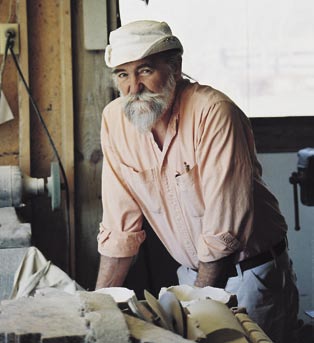 |
||||||||
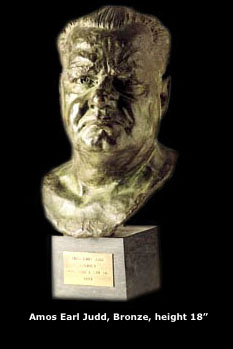 |
|||||||||
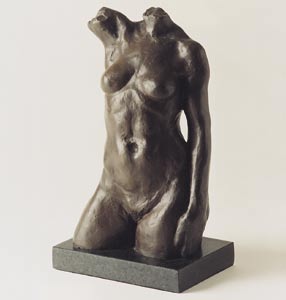 |
|||||||||
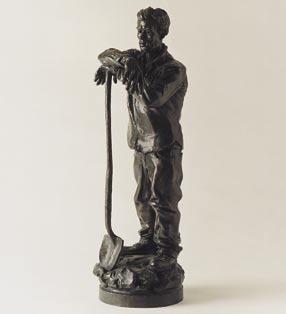 |
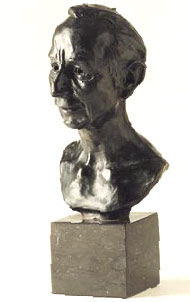 |
||||||||
|
Torso, Bronze, height 12”
|
|||||||||
|
Man with a Shovel, Bronze, height 21”
|
Mr. Loyd Dunning,
Bronze, height 14” |
||||||||